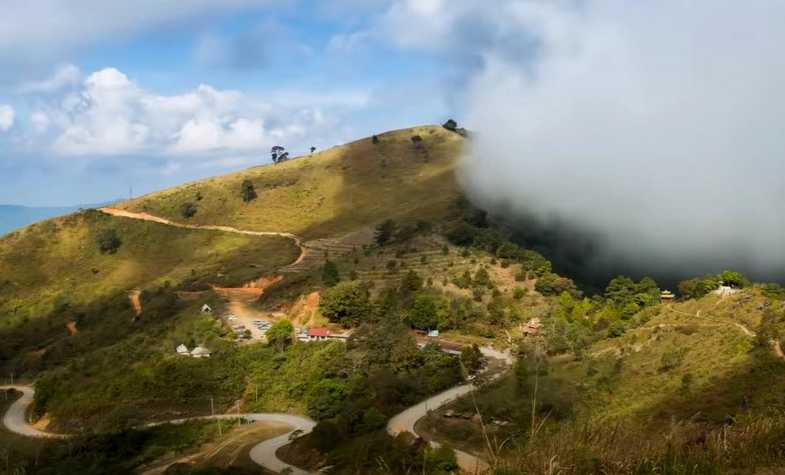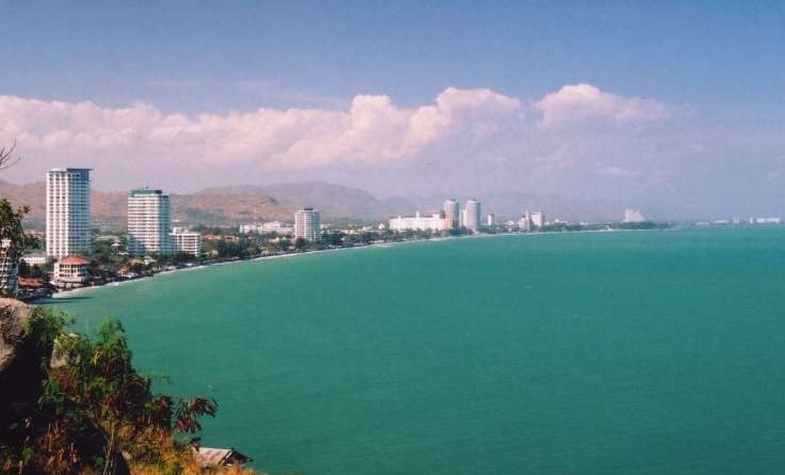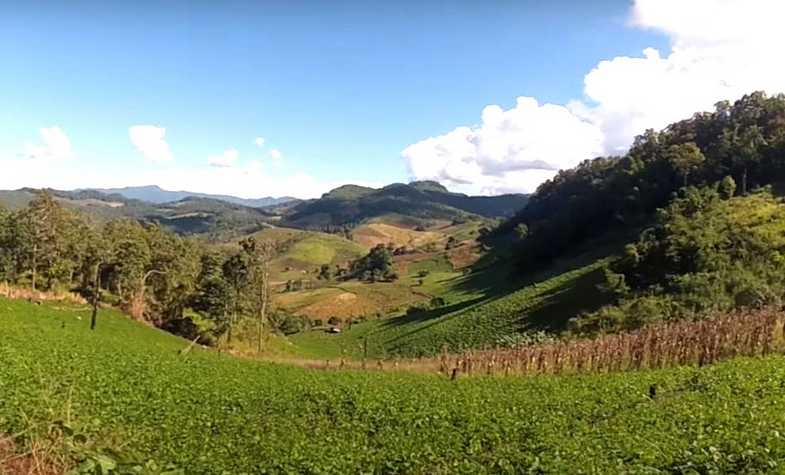Thailand geography and climate
Geography of Thailand
Thailand is a country in Southeast Asia that covers 514,000 square kilometers. The central area of the country is a fertile floodplain with a tropical monsoon climate that is ideal for wet-rice cultivation. This area attracted settlers, while the marginal uplands and highlands of the northern region and Khorat Plateau to the northeast were less attractive. Thailand shares borders with Myanmar to the west, Cambodia and Laos to the east, and Malaysia to the south.
The terrain of Thailand consists of high mountains, a central plain, and an upland plateau. Mountains cover much of the north, extending along the Myanmar border down through the Kra Isthmus and the Malay Peninsula. The central plain is a lowland area drained by the Chao Phraya River and its tributaries, which is the country's principal river system, feeding into the delta at the head of the Bay of Bangkok. About one-third of the nation's territory is drained by the Chao Phraya system. The Khorat Plateau is a region of gently rolling low hills and shallow lakes that drains into the Mekong through the Mun River in the northeast. The Mekong system empties into the South China Sea and includes a series of canals and dams.
The Chao Phraya and Mekong river systems are crucial to Thailand's agricultural economy, as they support wet-rice cultivation and provide waterways for the transport of goods and people. In contrast, the peninsular region of Thailand has long coastlines, offshore islands, and diminishing mangrove swamps.The highest mountain in Thailand is Doi Inthanon, which reaches a height of 2,565 meters.

Thailand divides into six geographical regions, based on natural features including landforms and drainage, as well as human cultural patterns. They are, namely: the North Region, the Northeast Region, the Central Region, the East Region, the West Region and the South Region of Thailand. Northern Thailand is a mountainous area. These high mountains area is incised by steep river valleys and upland areas that border the central plain. A series of rivers, including the Nan, Ping, Wang, and Yom, unite in the lowlands to form the Chao Phraya Watershed. The Northeastern part is drained by rivers flowing into the Mekong basin, like the Kok and Ing.
The Northeast, with its poor soils, is not favoured agriculturally. The region consists mainly of the dry Khorat Plateau which in some parts is extremely flat, and a few low but rugged and rocky hills, the Phu Phan Mountains. Unlike the more fertile areas of Thailand, the Northeast has a long dry season, and much of the land is covered by sparse grasses. Mountains ring the plateau on the west and the south, and the Mekong delineates much of the northern and eastern rim.

Central Thailand, is a natural self-contained basin often termed "the rice bowl of Asia." Here the rather flat unchanging landscape facilitated inland water and road transport. The fertile area was able to sustain a dense population. The terrain of the region is dominated by the Chao Phraya and its tributaries and by the cultivated paddy fields. Metropolitan Bangkok, the focal point of trade, transport, and industrial activity, is situated on the southern edge of the region at the head of the Gulf of Thailand and includes part of the delta of the Chao Phraya BTS
Eastern Thailand lies between the Sankamphaeng Range, which forms the border of the Northeastern plateau to the north and the Gulf of Thailand to the south. The geography of the region is characterised by short mountain ranges alternating with small basins of short rivers which drain into the Gulf of Thailand.
The geography of the western region of Thailand, like the North, is characterised by high mountains and steep river valleys. Western Thailand hosts much of Thailand's less-disturbed forest areas. Water and minerals are also important natural resources; the region is home to many of the country's major dams, and mining is an important industry in the area.
Southern Thailand, part of a narrow peninsula, is distinctive in climate, terrain, and resources. Its economy is based on rice cultivation for subsistence and rubber products for industry. Other sources of income include coconut plantations, tin mining, and tourism, which is particularly lucrative on Phuket Island. Rolling and mountainous terrain and the absence of large rivers are conspicuous features of the South.

You may like:
Best Thailand tour 2023/2024 sun, sea & sand | Fascinating
Vietnam & Thailand tour 2023/2024 | South
Thailand tour Adventures
Climate of Thailand
The Thailand climate is controlled by tropical monsoons and the weather in Thailand is generally hot and humid across most of the country throughout most of the year.
The weather in central, northern, and northeastern Thailand (the landlocked provinces) is determined by three seasons, whereas the southern, coastal regions of Thailand feature only two, making the weather in Thailand quite easy to understand and plan a trip around.
In Thailand’s inland provinces the seasons are clearly defined: Between November and May the weather is mostly dry and the cool season and hot season occur from November to February and March to May respectively.
The other inland season, the rainy season, lasts from May to November and is dominated by the southwest monsoon, during which time rainfall in most of Thailand is at its heaviest.
The southern, coastal region of Thailand really has only two seasons – the rainy season and the dry season. Fortunately, for those planning a beach holiday, Thailand’s two coasts have slightly different rainy seasons, allowing visitors to find sunny beaches nearly year-round.
On the Andaman or west coast, where Phuket, Krabi, and the Phi Phi Islands lie, the southwest monsoon brings heavy storms from April to October, while on the Gulf of Thailand or east coast, where Koh Samui, Koh Phangan, and Koh Tao lie, the most rain falls between September and December.
Read more: Timing your trip: Discovering the best month to visit Thailand
***
Travel Authentic Asia Company is your best choice for discovering the beauty of Southeast Asia. Our experienced and knowledgeable travel advisors are committed to helping you create a tailor-made tour and extraordinary experiences in this majestic region.
If you're looking for an authentic cultural experience, do not hesitate to contact Travel Authentic Asia to choose a Thailand tour, Southeast Asia tour package or to customize your own style tour to South East Asia.

